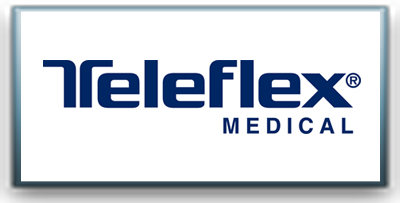Patient SafetyNet Remote Monitoring


Keep Patients Safe When Administering Opioids
In August 2012, The Joint Commission issued a Sentinel Event Alert on the safe use of opioids in hospitals and recommended continuous oxygenation and ventilation monitoring.1 With Masimo Patient SafetyNet*, you can rest easier knowing accurate alarms from Masimo SET® pulse oximetry are instantly sent to assigned clinicians through an easy-to-use, flexible, and cost-effective monitoring system.

Patient SafetyNet and Masimo SET® enabled Dartmouth-Hitchcock Medical Center to significantly improve clinical outcomes and reduce the cost of care.2,3
For post-surgical ventilation monitoring, Patient SafetyNet is available with standard capnography or with rainbow Acoustic Monitoring™ which utilizes a noninvasive acoustic sensor to measure respiration rate continuously. In a recent study, rainbow Acoustic Monitoring™ had a higher sensitivity than standard capnography to detect pauses in breathing.4
Patient SafetyNet Connects Patients and Caregivers Quickly, Easily, and Accurately
Masimo Patient SafetyNet* remote monitoring and clinician notification system combines the performance of Masimo SET® pulse oximetry with ventilation monitoring and wireless clinician notification via pager or 3rd party gateway to IP phones. Patient SafetyNet provides an unmatched level of patient safety on the general floor in a system that can either be integrated into either your existing wired or wireless network.
Facilitating appropriate early clinical response, preemptions of sentinel events, and avoidance of unnecessary transfers while helping you meet The Joint Commission1, Institute for Safe Medication Practices (ISMP)5, Anesthesia Patient Safety Foundation (APSF)3, and American Society of Anesthesiologists (ASA) guidelines.6

*The use of the trademark SafetyNet is under license from University HealthSystem Consortium.
References
- The Joint Commission Sentinel Event Alert Issue 49, August 8, 2012.
- Taenzer AH et al. Anesthesiology. 2010;112(2);282-287.
- Taenzer AH et al. Anesthesia Patient Safety Foundation Newsletter Spring-Summer 2012.
- Ramsay et al. Anes & Anal. 2013.
- ISMP Medication Safety Alert! Newsletter. 2009.
- Practice Guidelines for the Prevention, Detection, and Management of Respiratory Depression Associated with Neuraxial Opioid Administration. Anesthesiology. 2009;110:1–1.
- † As a result of respiratory depression from opioids.
Overview and Clinical Benefits
Clinical Flexibility
Configurable screens allow you to view the number of patients, clinical measurements, and level of detail that are important to you
With Patient SafetyNet, you choose the system configurations that meet your specific clinical need. You can display real-time data from up to 40 patients at a time and select up to four parameters based on your patient population and clinical practices.
 Parameter View: View up to four parameter value s and alarm status of all patients at a glance
Parameter View: View up to four parameter value s and alarm status of all patients at a glance
 Trend View: Review up to 96 hours of history from all monitored parameters with an easy-to-use touchscreen
Trend View: Review up to 96 hours of history from all monitored parameters with an easy-to-use touchscreen
 Trend View: Review up to 96 hours of history from all monitored parameters with an easy-to-use touchscreen
Trend View: Review up to 96 hours of history from all monitored parameters with an easy-to-use touchscreen
Powerful Information
Powerful Information to Manage Patients, Optimize Workflow, and Assess IT Infrastructure
Flexible and convenient access with the ability to generate and print reports from any hospital computer, eliminating the need to download data directly from the bedside device.
| > | Patient Report – Improve clinical workflow by optimizing alarms and notification settings |
| > | System Report – Summarizes system level events |
| > | Patient Trend Analysis Report – Evaluate historical trend data to determine additional diagnostic needs (example below) |
Data like respiration rate and oximetry can prove to be valuable tools in understanding whether a patient’s respiration patterns indicate previously undetected issues, especially during sleep.
 Web Interface: Web-based configurable reporting to display the data you need, when you need it
Web Interface: Web-based configurable reporting to display the data you need, when you need it
“One unanticipated effect is new diagnoses identified by the system. Many obstructive respiration patterns, likely undiagnosed sleep apnea, have caused repeated alarms at night and led to increased collaboration with the on-site sleep lab.”1
Joshua Pyke
Patient Safety & Quality Healthcare

References
- Pyke, Joshua B, et al. Patient Safety & Quality Healthcare. 2010.
Enabling Technology
Masimo SET® Pulse Oximetry
The accuracy and reliability of Masimo SET® significantly reduces false alarms and makes accurate clinician notification on the general floor possible
When identifying general floor monitoring solutions some hospitals look to scale their telemetry system to the general floor. However ECG telemetry is not optimal for monitoring non-cardiac post-surgical patients because:
|
Oxygenation monitoring, as recommended by both The Joint Commission and Anesthesia Patient Safety Foundation, provides an earlier indication of respiratory depression. Given nurse-to-patient ratios, patient ambulation, and rising patient acuity on the general floor, the chosen pulse oximetry technology must be able to measure through challenging conditions while minimizing false alarms. Masimo SET® is the best pulse oximetry choice for patient safety, clinical efficacy, and cost effectiveness.1 |
True and False Alarm Rates During Challenging Conditions

In this hospital-based study, investigators measured SpO2 in 10 subjects during motion and low perfusion conditions and calculated the false alarm rate during 120 full oxygenation events (specificity) and true alarm rate during 40 de-oxygenated events (sensitivity).2
Evidence-Based Alarm Management
| > | Earlier alarm notification without extending averaging times during challenging conditions like the Nellcor N-600 |
| > | Alarm reports enable evidence-based settings to titrate alarm frequency to acceptable levels for general floor clinicians |
| > | Configure alarm rules remotely or at the bedside to provide maximum clinical flexibility |
Value of Patient SafetyNet
Proven to Help Improve Clinical Outcomes3
| Since Patient SafetyNet was instituted on a postsurigcal orthopedic unit at Dartmouth Hitchcock Medical Center in 2007, there have been no patients that have suffered irreversible severe brain damage or death as a result of respiratory depression from opioids. | In their initial 11 month evaluation of Patient SafetyNet on a single 36-bed orthopedic postsurgical unit, they demonstrated significant reductions in rapid response team activations and ICU transfers:3 |

Resources
Organization Recommendations
Clinical References
- Peberdy, et al. “Cardiopulmonary resuscitation of adults in the hospital: A report of 14720 cardiac arrests from the National Registry of Cardiopulmonary Resuscitation.” Resuscitation 58 (2003), 297-308.
- Cashman JN, Dolin SJ. Respiratory and haemodynamic effects of acute postoperative pain management: evidence from published data. Br J Anaesth 2004;93:212-23.
- Buist M, Bernard S, Nguyen TV, Moore G, Anderson J. Association between clinically abnormal observations and subsequent in-hospital mortality: a prospective study. Resuscitation 2004;62:137-41.
- Meissner B et al. The Rate and Costs Attributable to Intravenous Patient-Controlled Analgesia Errors. Hospital Pharmacy Volume 44, Number 4, pp 312–324 2009
- Santell J. Parenteral Medication Errors, ASHP Summit on Preventing Death and Harm from Use of Intravenous Medications. ASHP July 2008
- Hendrich et al. A 36-Hospital Time and Motion Study: How Do Medical-Surgical Nurses Spend Their Time? The Permanente Journal/ Summer 2008/ Volume 12 No. 3
- HealthGrades. The Eighth Annual HealthGrades Patient Safety in American Hospitals Study. March 2011. Golden Col. HealthGrades Inc.
- Finkel KJ et al. Prevalence of undiagnosed obstructive sleep apnea among adult surgical patients in an academic medical center, Sleep Med 2009 107:753-758
- Ramachandran K, Josephs L. A Meta-analysis of Clinical Screening Tests for Obstructive Sleep Apnea. Anesthesiology 2009; 110:928-39


















